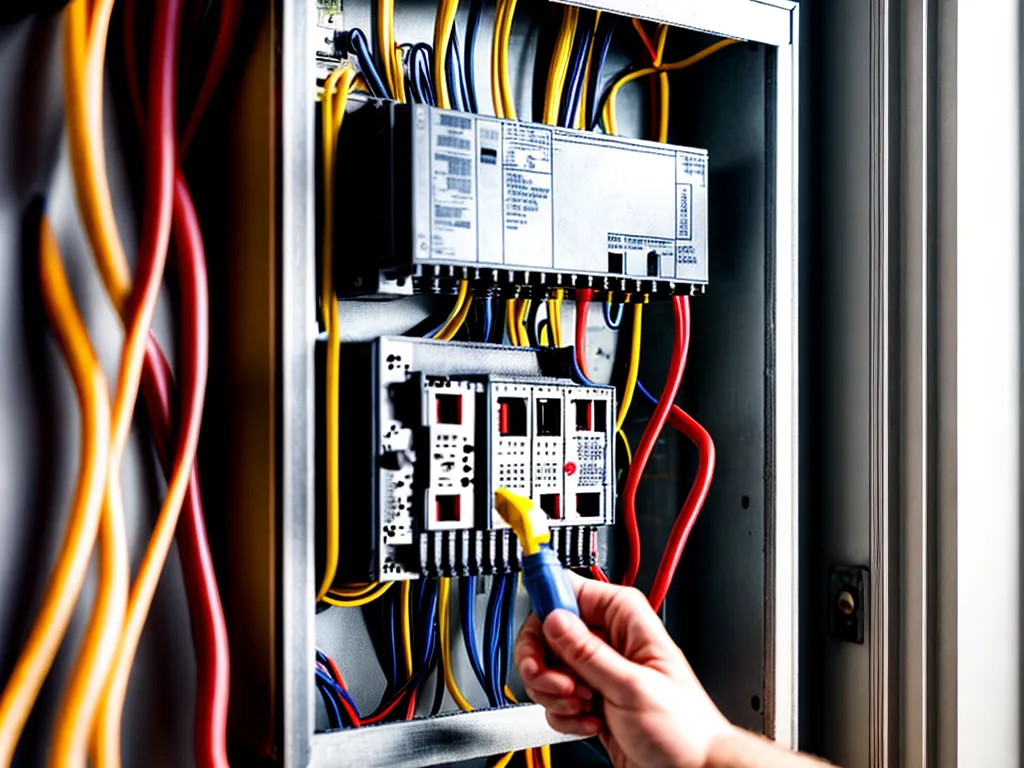
Introduction
Troubleshooting wiring problems in older buildings can be challenging, especially with obscure 220V issues. As a building ages, wiring wears out, connections loosen, and problems develop. Tracking down the source of obscure electrical gremlins requires patience, perseverance, and the right troubleshooting approach. In this guide, I will walk through the major steps involved in diagnosing and resolving tricky 220V wiring issues in older commercial spaces.
Safety First
When dealing with any electrical problems, safety should always be the top priority. Faulty wiring can present serious shock and fire hazards. Here are some key precautions to take:
- Use proper personal protective equipment like rubber-soled shoes, gloves, and eye protection
- Turn off power at the breaker panel before doing any troubleshooting
- Test wires for power before touching to verify power is off
- Have a partner or spotter available in case of accidents
- Only work on wiring you are qualified to handle
Common Causes of 220V Wiring Issues
There are a variety of factors that can lead to problems with 220V circuits in aged buildings:
Loose Connections
Over years of use, connections between wires, receptacles, and breakers can vibrate loose. This can create electrical arcing, intermittent contacts, overheating, and other issues. Tightening screws at outlets and panel connections may resolve some problems.
Wire Damage
Rodents, insects, moisture, and normal wear can damage wire insulation over time. Bare spots or cracked insulation can allow wires to arc to ground creating shorts. Re-routing or replacing damaged wires may be needed.
Overloaded Circuits
Adding new equipment over the years can overload circuits beyond their capacity. Upgrading wiring and adding circuits can help reduce the strain.
Deteriorated Breakers and Fixtures
Old breakers, receptacles, and switches can malfunction. Replacing defective parts may be simpler than tracking down wiring gremlins.
Incorrect Wiring
Improper installations or DIY jobs can miswire circuits. Checking that wiring matches applicable codes can uncover problems.
Essential Troubleshooting Gear
These basic tools will aid in diagnosing 220V wiring faults:
- Multimeter - For measuring voltage, continuity, resistance, and current
- Receptacle tester - Plug-in testers check wiring faults at outlets
- Breaker tester - Confirms a breaker trips correctly when faulted
- Cable tracker - Traces wires hidden in walls to junction points
- Non-contact voltage tester - Detects live power in wires without contact
- Current clamp - Measures current flow through cables
Step-by-Step Troubleshooting Process
With the right gear in hand, these systematic troubleshooting steps can aid in tracking down and resolving obscure 220V problems:
1. Talk to Tenants
Discussing issues tenants are experiencing can provide clues to the nature of the problem. Ask about:
- What devices/outlets are affected?
- When does the problem occur most?
- Does resetting breakers temporarily fix it?
This can reveal if it's an intermittent or constant issue and where to focus efforts.
2. Review Circuit Diagrams
Check the wiring diagrams for the affected circuit to gain an understanding of how devices are connected. This provides a blueprint for tracing the problem.
3. Inspect Fixtures and Connections
Remove cover plates and inspect connections at outlets, switches, and junction boxes for signs of loose, damaged, or arcing connections. Tighten any loose screws and replace damaged wires or devices.
4. Test Outlets and Breakers
Use a receptacle tester to check for faults at outlets. Verify breakers are not tripping due to overloads. This can isolate the problem to the wiring or devices themselves.
5. Check Voltage and Current
Use a multimeter to check voltage at outlets. It should match the 220V reading at the breaker panel. Clamp meters can also find excessive current draw from faults.
6. Isolate Sections of Circuit
Narrow down problem areas by splitting the circuit into sections. Turn off select breakers to isolate power to sections. Check if the problem disappears when power is removed from certain areas.
7. Trace Wiring Runs
Use a cable tracker to trace hidden wiring through walls and ceilings. Look for damage, junctions leading to other areas, or devices added by previous owners.
8. Rewire or Replace Defective Sections
Once the faulty section is identified, repair or replace damaged wiring as needed according to applicable electrical codes.
9. Test Repairs and Restore Power
With repairs made, turn power back on and retest the circuit. Confirm proper voltage at outlets and test connected devices. Verify the obscure wiring fault is now resolved.
When to Call an Electrician
If you cannot identify the root cause of the problem, it may be safest to call a licensed electrician. They have specialized tools and knowledge for diagnosing tricky electrical gremlins. Consider professional help for:
- Faults in complicated high-voltage wiring
- Wiring located in hazardous areas
- Faults that persist after DIY troubleshooting
- Projects that require electrical permits/inspections
Obscure 220V wiring problems can be frustrating, but methodically troubleshooting and safely making necessary repairs or upgrades can get your building's electrical system back on track. Let me know if you need any help!